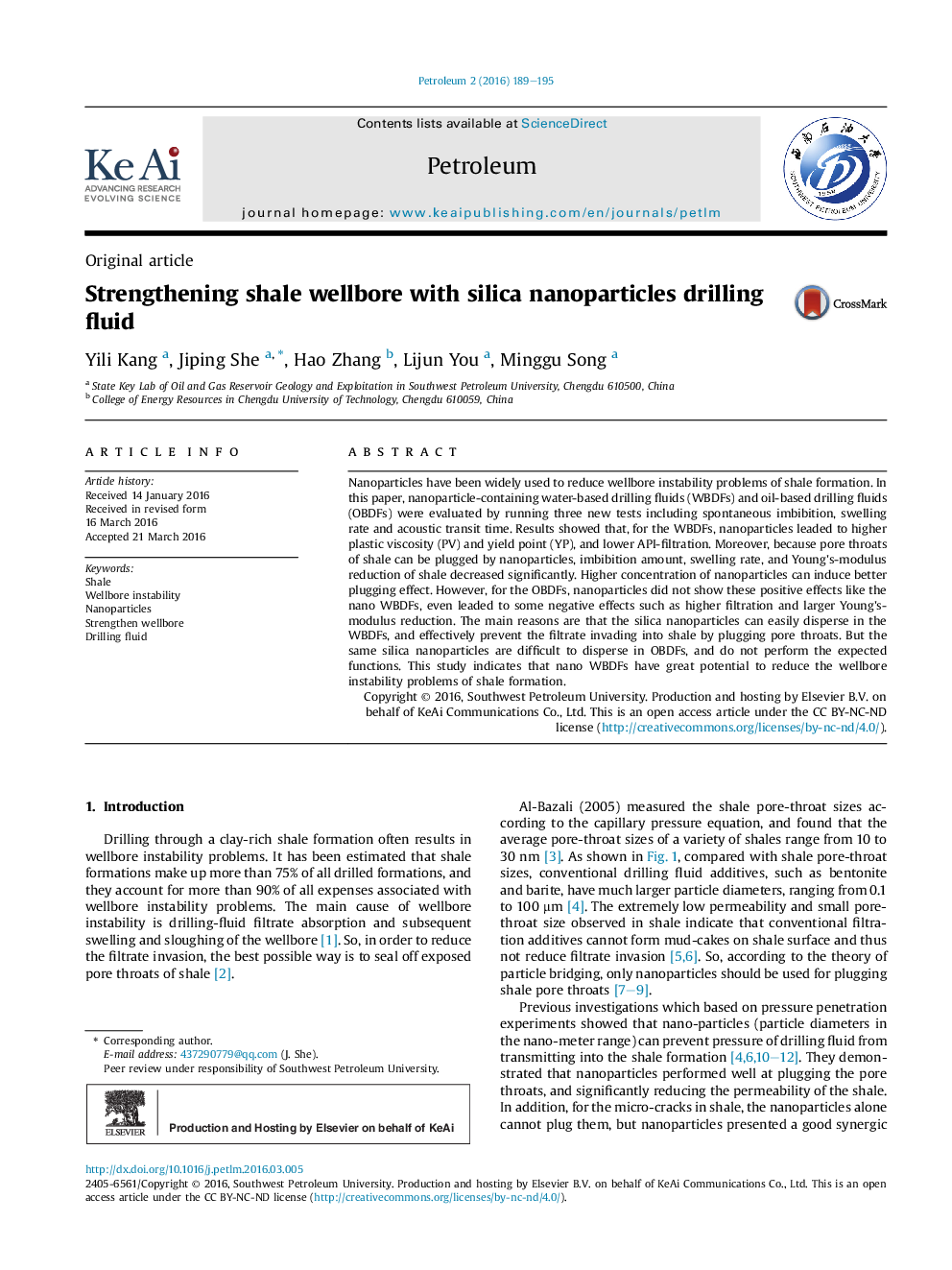| Article ID | Journal | Published Year | Pages | File Type |
|---|---|---|---|---|
| 852907 | Petroleum | 2016 | 7 Pages |
Nanoparticles have been widely used to reduce wellbore instability problems of shale formation. In this paper, nanoparticle-containing water-based drilling fluids (WBDFs) and oil-based drilling fluids (OBDFs) were evaluated by running three new tests including spontaneous imbibition, swelling rate and acoustic transit time. Results showed that, for the WBDFs, nanoparticles leaded to higher plastic viscosity (PV) and yield point (YP), and lower API-filtration. Moreover, because pore throats of shale can be plugged by nanoparticles, imbibition amount, swelling rate, and Young's-modulus reduction of shale decreased significantly. Higher concentration of nanoparticles can induce better plugging effect. However, for the OBDFs, nanoparticles did not show these positive effects like the nano WBDFs, even leaded to some negative effects such as higher filtration and larger Young's-modulus reduction. The main reasons are that the silica nanoparticles can easily disperse in the WBDFs, and effectively prevent the filtrate invading into shale by plugging pore throats. But the same silica nanoparticles are difficult to disperse in OBDFs, and do not perform the expected functions. This study indicates that nano WBDFs have great potential to reduce the wellbore instability problems of shale formation.
